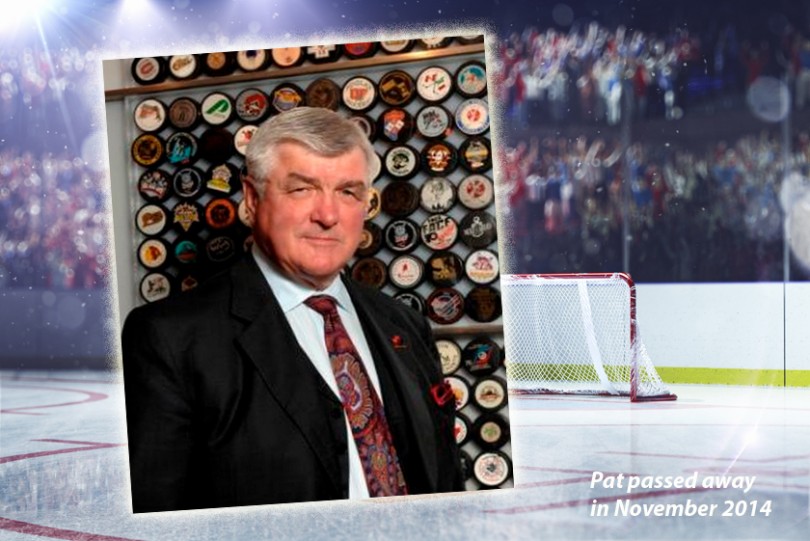Pat Quinn sees the irony. Then head coach of the Edmonton Oilers, previously with the Vancouver Canucks and a former NHL player himself, Quinn couldn’t even walk with ease, let alone skate.
“Here I am, coaching players to be the best they could be, and I couldn’t get on the ice anymore,” says Quinn. “I had a big limp, and was totally occupied with the pain. There was a constant ache, and it didn’t go away.”
As a player and coach, Quinn was known for his toughness. But now, in the mid-1990s, he was hobbled by a bad hip. Finally, in 1997, he couldn’t take the discomfort any longer and agreed to a hip replacement, done by Vancouver orthopaedic surgeon Bas Masri.
Quinn was on crutches for seven weeks, unable to bear any weight. But the benefits were immediate. “Other than the pain from the incision itself, which doesn’t take long to heal, the constant pain was gone,” says Quinn. “The relief was terrifically rewarding.”
The decade since Quinn’s hip replacement has seen much progress in medical and surgical innovations. “One sign is that hip replacement patients today are able to walk right away,” says Dr. Masri.
Quinn recalls the differences since his recovery: “I was traveling with the Canucks, going through airports on crutches, unable to bear weight, and injecting myself with needles every day to prevent clots after the surgery. Today, you can take a pill once a day for that. I just talked to a friend two days after his hip replacement, and he was already up and starting to walk. The progress is amazing.”
Helping to spur such progress, and improved patient outcomes, is the research that’s backed by the Canadian Orthopaedic Foundation’s fundraising.
“Research is critical to innovation,” says Dr. Masri. “Before the 1960s, hip replacements weren’t common – people with hip arthritis were effectively benched from the things they loved to do. Not so anymore, and hip replacements continue to be the most successful surgeries performed.”
With his new hip, Quinn went on to coach the Toronto Maple Leafs, coach Team Canada to a gold medal in men’s hockey at the 2002 Olympic Games, and become part-owner of the junior Vancouver Giants of the Western Hockey League (which won the Memorial Cup in 2007). In 2008, he was named the head coach of the Canadian Junior National team.
As Quinn helps these young players to learn, he’s also thinking of other important lessons. Quinn was introduced to the Canadian Orthopaedic Foundation’s Because You Can! effort, of which Dr. Masri is also an early supporter. The public awareness campaign aims to promote how Canadians can take proactive steps from a young age to improve their bone and joint health, stay active, and avoid injuries (which can help reduce the need for orthopaedic intervention).
“It’s an important message – build and keep your bones and joints because you can,” says Quinn, now 65. “Don’t be sedentary. You don’t have to be an athlete, just find something you like, and keep yourself active. We need to promote a rounded life.”
As a younger hockey player, Quinn admits that he never thought about bone and joint health. In his 50s, when his hip started to feel uncomfortable, he figured he had a groin injury, common among hockey players. But he had never felt groin problems at night before, and now the pain in his hip was waking him up. In his case, hip surgery was the solution. But Quinn recognizes that much of bone and joint health is within our control.
Being active and maintaining a healthy weight are two positive steps – and can go together, he says. “I’m a big guy, and maybe I could have lost some weight, but here’s the thing: you can’t work out because you’re sore, and if you can’t work it off, well your weight starts to climb. It’s a cycle and it’s frustrating.”
Dr. Masri, head of orthopaedics at the University of British Columbia, notes that higher than normal weights (a body mass index of 40-plus) can significantly increase the odds of requiring either a hip replacement or a knee replacement.
“We all need to stay active and keep our muscles strong,” says Dr. Masri. “Doing that doesn’t necessarily mean you’ll avoid surgery. But if you do need surgery, at least you’ll be in the best shape possible.”
People are living longer lives, says Quinn, but the goal should be to make those years productive by looking after our bodies. Satisfaction comes from being free to choose what makes us happy, he says, with no physical constraints.
“Wouldn’t it be awful if we can’t do that,” Quinn asks, “because we didn’t take care of ourselves? When you’ve got your health, you’ve got everything.”


